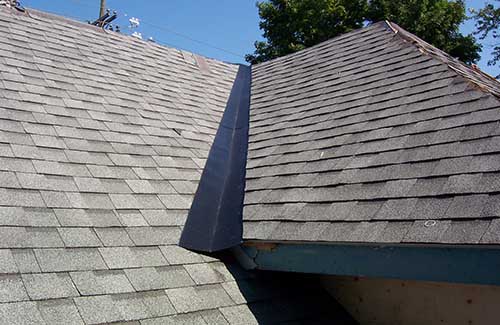Shingles, particularly asphalt shingles, are a popular roofing material that are used in construction in Ottawa and throughout North America. Whether you are roofing or re-roofing, you might be considering installing shingles on your own or weighing options for specialty roofing contractors. With some basic roofing skills and know-how about shingle installation, you can tackle a job like this.
Here is what to know before installing shingles on your home:
Shingle Installation Mistakes To Avoid
Oftentimes, Ottawa homeowners who take on shingle installation make the same three mistakes:
- They forget starter shingles
- They nail shingles down improperly
- They line shingles up improperly
You should always have starter shingles, because they serve two very important purposes: water and wind protection at the eave and rake of the roof. Starter shingles seal the field shingle into place, and that prevents water and air from getting underneath the shingles and causing damage.
Next, not having proper nailing technique will cause a lot of problems. While Ottawa building codes give contractors directions for nailing shingles down, most homeowners are unaware of these directions. Depending on the type of shingle, the nailing zone can be different. Be aware that improperly nailed shingles are in danger of getting ripped off in wind or causing water damage, because they don’t seal correctly.
Lastly, roof shingles have indentations to aid with correct alignment, both horizontally and vertically. Although shingles can be staggered or perfectly lined up, you need to follow the manufacturer’s instructions to ensure the shingles line up properly.
Work From Left to Right, Bottom to Top
Every professional crew uses the same pattern. They begin at the bottom left corner of the house then work over to the right side. From there, they move upward to the eave line. If several people are working on installation, there will usually be one person who starts before the rest with the overhang while the rest focus on going from the bottom to the top.
Follow the same method to get the best lay.
Flashing Valleys and Seams
Since nearly 75-percent of leaks happen at the valley where two planes meet, or at chimneys, the roof flashing should always be installed before shingle installation. Aluminum flashings are recommended for asphalt shingles.
Full Replacement or No?
Depending on the age of your roof, the aesthetics, and how many layers of shingles exist underneath the current one, you may be able to do a partial installation. Sometimes, this is a better decision during periods of inclement weather or when your budget is too lower to afford an entire brand new roof.
However, there are some issues that can come about from a partial replacement. For example, some companies charge more for repairing or replacing damaged sections of shingles than they do for installing new shingles. Labor and disposal costs, after all, are the same for partial replacements and new installations. You also need to consider the balance of the ridge line, which can be affected when the new roof is lower than the old roof.
Conclusion
There are many things you need to research before installing shingles, but these tips will get you started. Remember to follow the instructions on the stacks of shingles to avoid making careless mistakes. Roofing can be done alone, so take your time and work diligently. Of course, if you need assistance, there are professional roofing contractors who can assist you.




0 Comments